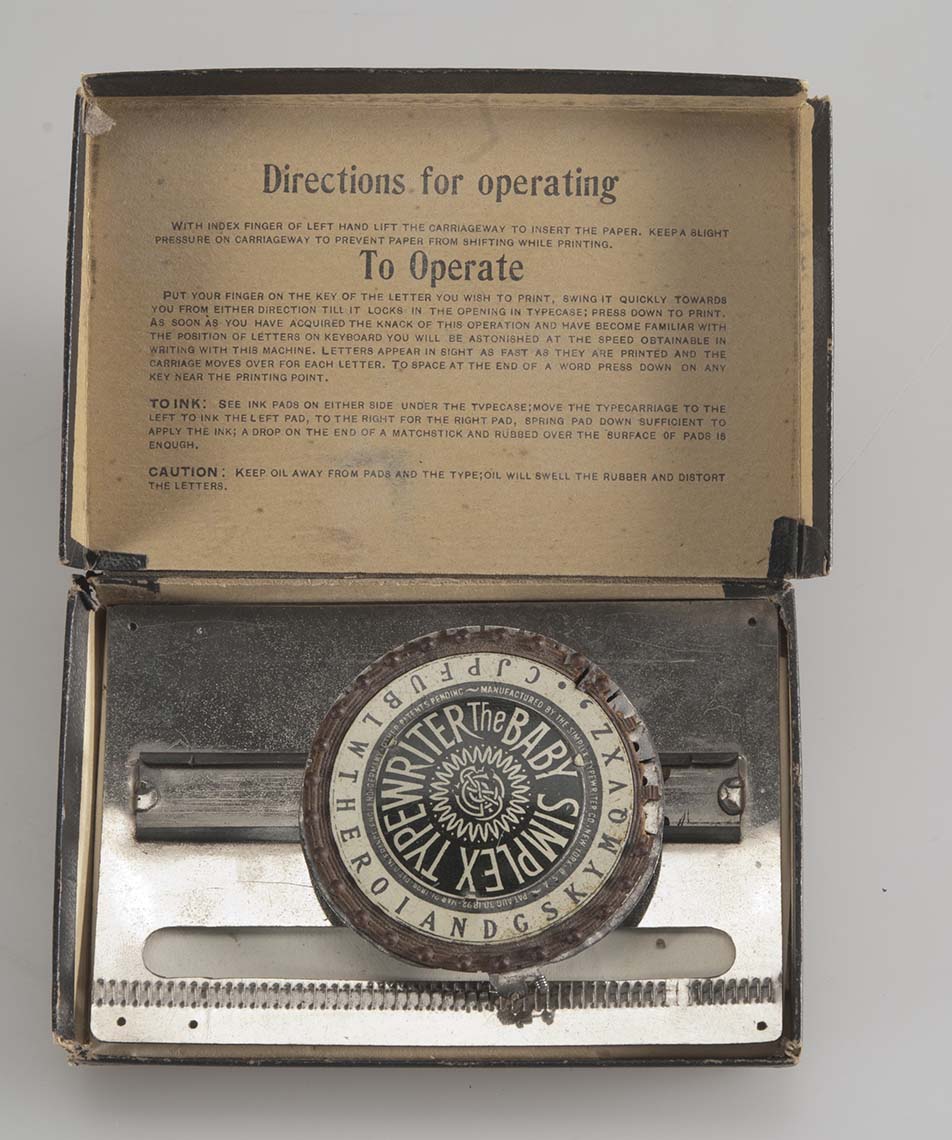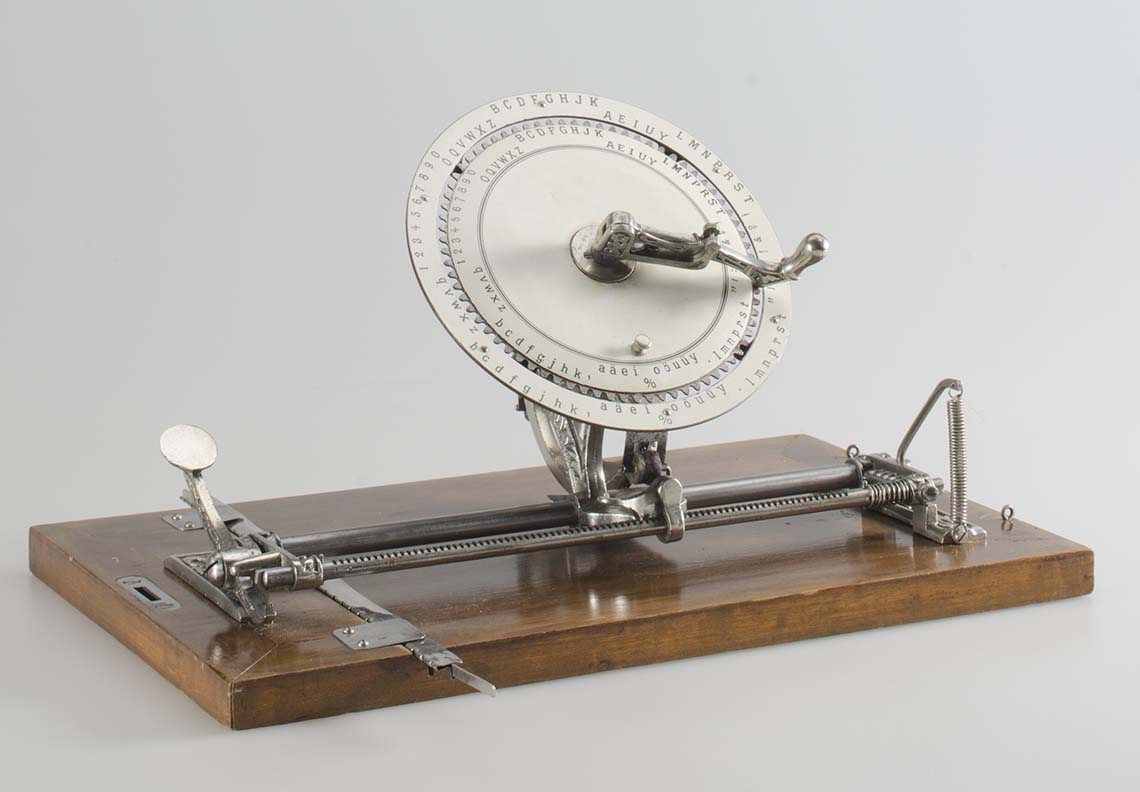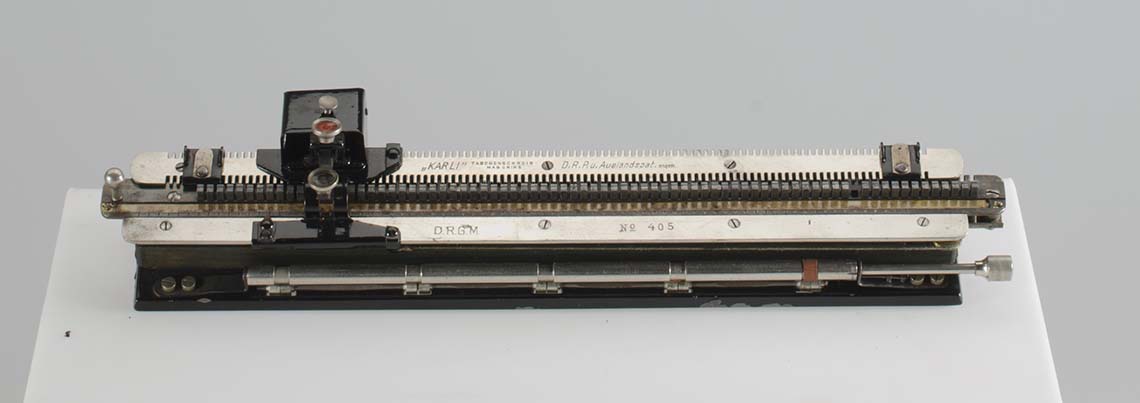13. Index typewriters
In the small hanging cabinet you can see some very rare typewriters. The boom in typewriter manufacturing in the 1890s resulted in a wide variety of models. Despite Remington’s success, the various inventors took a risk in designing a typewriter. In doing so, the emphasis was on very small, manageable and very cheap models. This was because the masses would only be motivated by cheap prices. Mark Twain paid 150 dollars for the first Remington and the subsequent models were also scarcely affordable for private people.

The “Dollar” to the far right of the cabinet even has its price incorporated into the name. It is difficult to believe that many of these former sales hits can scarcely be found today.

The very low price of the devices tended to favour a throw-away society. The Baby-Simplex is an example of this. It was manufactured in New York in 1901 and is the smallest typewriter in the world at only 15 grams. Most of the models on display here operate according to an index system whereby either a pointer must be placed on the letters or a disk with the letters must simply be turned to the correct position and then printed on the paper. Many of these very easy-to-use typewriters were very popular as portable typewriters.

The “Diskret” on the far left and the “Karli” in front of it are particularly strange. Both typewriters originate from Germany. The Karli, a very rare rod type machine, was manufactured in the 1920s. The Diskret was produced at the turn of the century in Karlsruhe and given the name “Secret and world typewriter”. As the same suggests, this is a typewriter with which text can be encrypted and therefore written in secrecy. The two plates, each fitted with the alphabet, can be pushed together so that the text can be decrypted.

13. Index typewriters

Pilot intervention in South Tyrol co-financed by the Cassa di Risparmio di Bolzano Foundation





